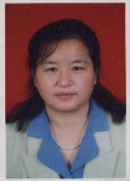Huang Di Nei Jing (Yellow Emperor's Canon of Medicine)
Author: Dr. Lee
Clicks:
Time: 2010/12/1 17:29:17
Huang Di Nei Jing (Yellow Emperor's Canon of Medicine), the earliest extant canon of TCM, is composed of two parts, Su Wen (Plain Conversation) and Ling Shu (Spiritual Pivot), each containing 81 chapters. Huang Di Nei Jing (Yellow Emperor's Canon of Medicine)is generally believed to be compiled in the period between Warring States and Qin and Han Dynasties. It is a collection of the theories and experiences of doctors from different schools.
Early in the book entitled Qi Lue (Records of Books) compiled by Liu Xiang (c.77-6 BC) and his son Liu Xin (?-23AD), Huang Di Nei Jing (Yellow Emperor's Canon of Medicine) was mentioned. Now there is still dispute over whether Huang Di Nei Jing (Yellow Emperor's Canon of Medicine) mentioned in Qi Lue was the one composed of Su Wen (Plain Conversation) and Ling Shu (Spiritual Pivot) and handed down to now.
Su Wen (Plain Conversation) and Ling Shu (Spiritual Pivot) contain the following contents:
1. Theoretically, Su Wen (素问,Plain Conversation) discusses the principles of yin-yang, cultivation of health in different seasons as well as the physiology and pathology of viscera and Channels. While Ling Shu (Spiritual Pivot mainly deals with acupuncture and moxibustion. Both fascicles seldom mention specific treatment with drugs, just discussing viscera, diet and the compatibility between drugs based on the theory of wuxing(five elements).
2. Most parts of the two fascicles were written in conversation between Huang Di (a great legendary king in ancient China) and his ministers like Qi Bo, Lei Gong and Bo Gao. The questions and answers asked and replied by different people reflect different ideas in medicine. These ideas were either based on the theory of wu xing(five elements) to divide people into five categories known as Metal, Wood, Water, Fire and Earth, or based on the theory of yin-yang to classify people into five groups known as tai yang, shao yang, tai yin, shao yin and balanced yin and yang.
3. It is generally recognized that Ling Shu (Spiritual Pivot) is easy to read and must be compiled after Su Wen (Plain Conversation). But in Su Wen (Plain Conversation) quotations of Ling Shu (Spiritual Pivot) also can be found. This sh.ows that both fascicles were influenced each other. The theories in Su Wen (Plain Conversation) and Ling Shu(Spiritual Pivot) had greatly influenced the development of TCM in different dynasties.

